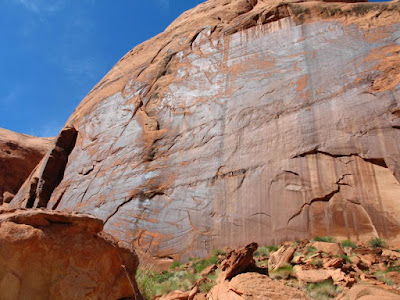Desert Varnish and Geochronology
Have you ever been riding in the desert and noticed the varnish —
"Like chocolate syrup on ice cream?"
No, I'm talking about desert varnish, not dessert varnish, ya idjit.
Where was I? Oh, yes. It's often very dark, and desert varnish that looks like a tapestry on canyon walls. Old-earth geologists use this as yet another evidence for the age of our planet. Is this valid?
The rates of accumulation can vary, and are calibrated with long-age uniformitarian presuppositions. Like radiometric dating, the results vary greatly. In addition, the accumulations can be accelerated under different conditions. When the Genesis Flood is brought into the picture, things make much more sense.
"Like chocolate syrup on ice cream?"
No, I'm talking about desert varnish, not dessert varnish, ya idjit.
Where was I? Oh, yes. It's often very dark, and desert varnish that looks like a tapestry on canyon walls. Old-earth geologists use this as yet another evidence for the age of our planet. Is this valid?
 |
| This sandstone is covered with a fine black/blue patina. Image credit: US National Park Service. |
Dozens of geological processes are commonly claimed to proceed too slowly for the short timescale of the Bible. Many of these claimed slow processes have attached dates of tens of thousands to millions of years.To read the rest, rock on over to "Desert varnish grows much faster than geologists admit".
However, we usually only hear one side of the origins issue. It is too easy to make a wrong decision based on only one opinion. We should investigate the other side of an issue, especially when one side is heavily censored in the public arena. We also need to be aware that there are numerous unknowns in the earth sciences, and that the addition of another variable can result in vastly different conclusions. Sometimes it is discovered that slow processes today can occur rapidly under different circumstances. Another aspect is that with more research, dating methods considered solid are found to be suspect. With this in mind, we now consider whether the ‘slow formation’ of desert varnish is correct.